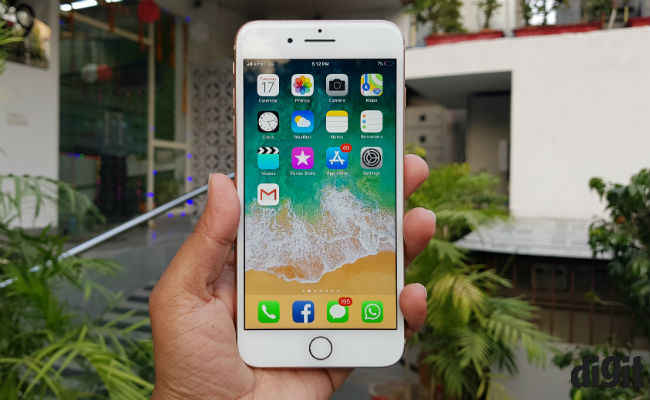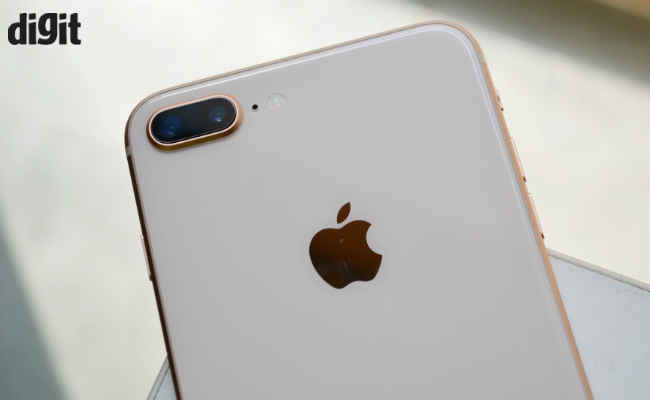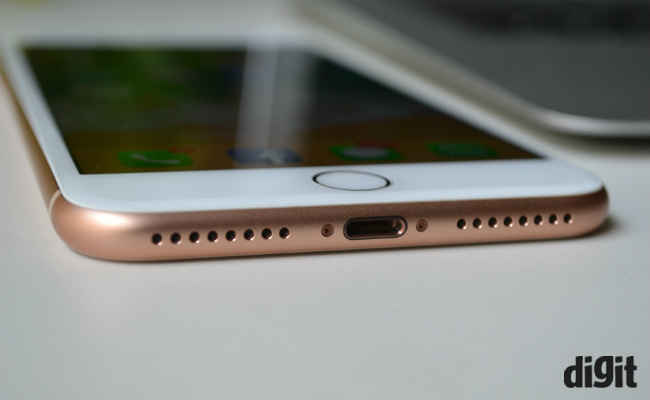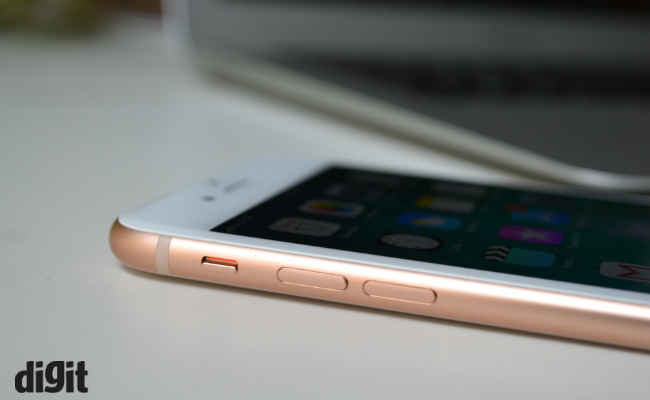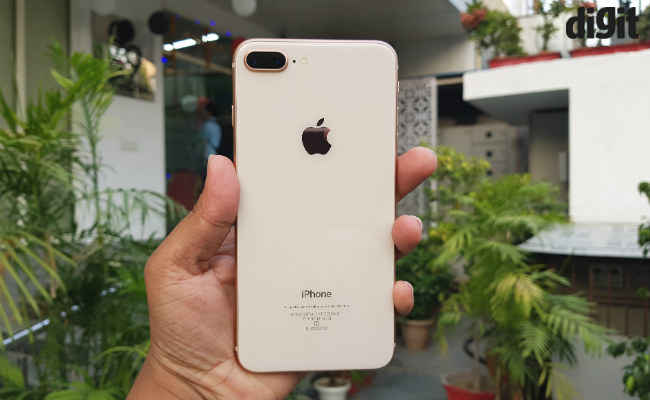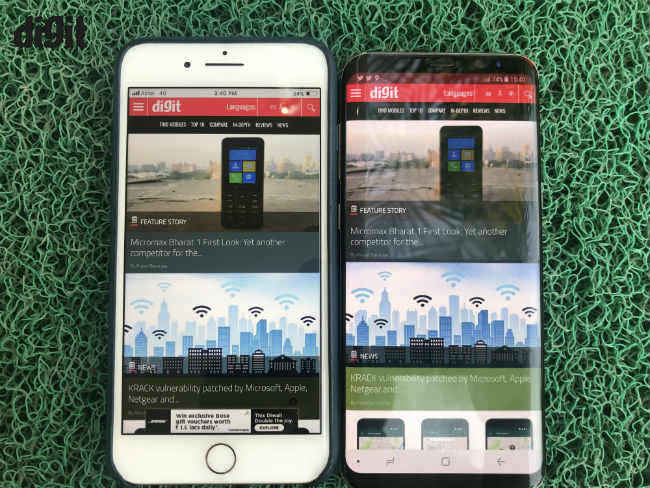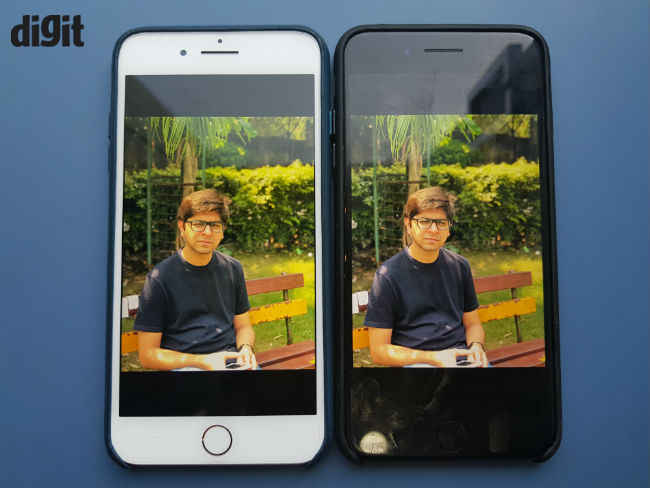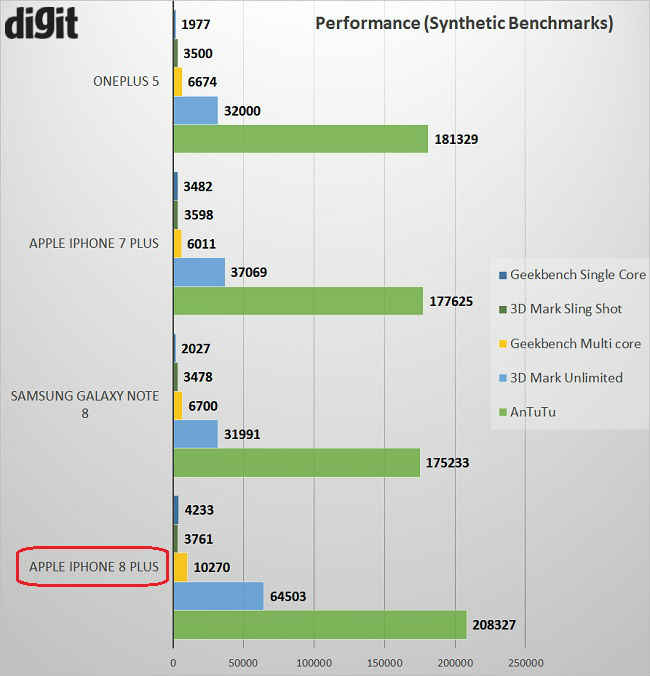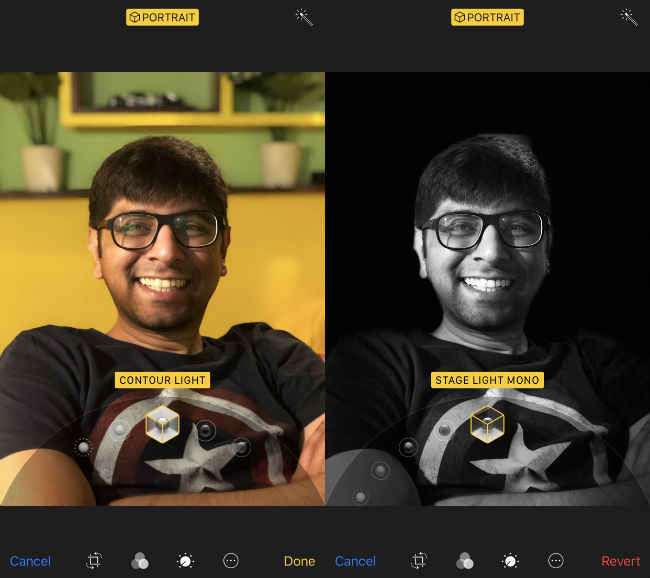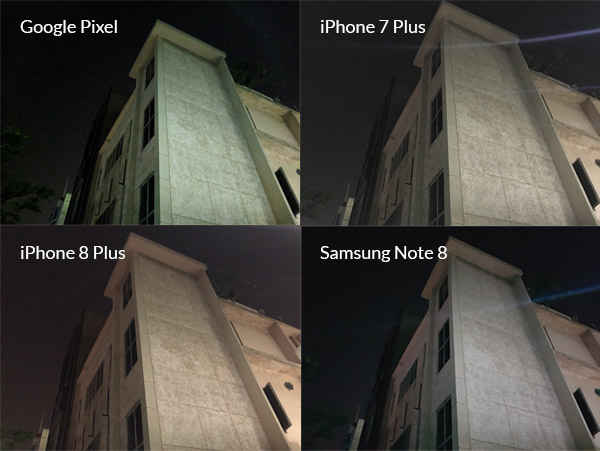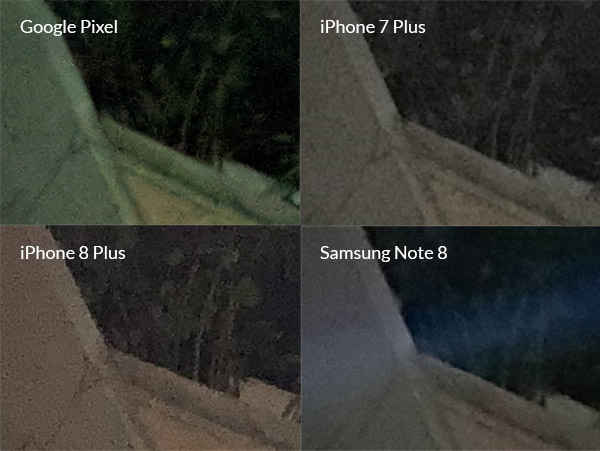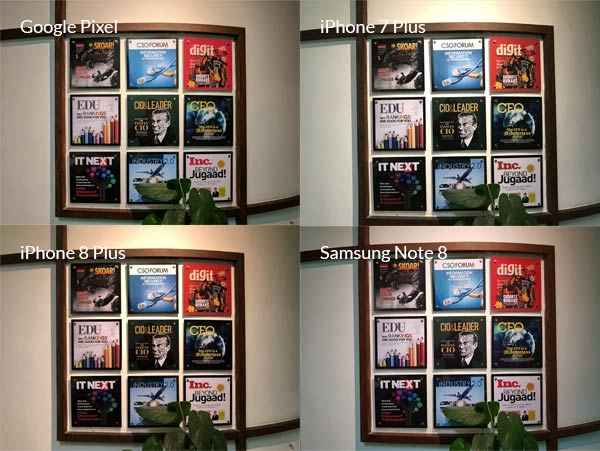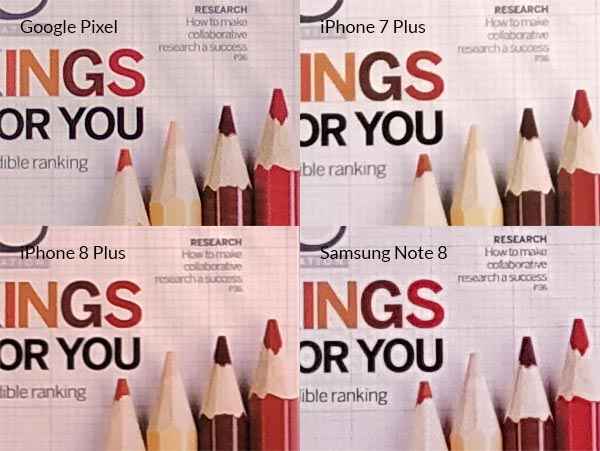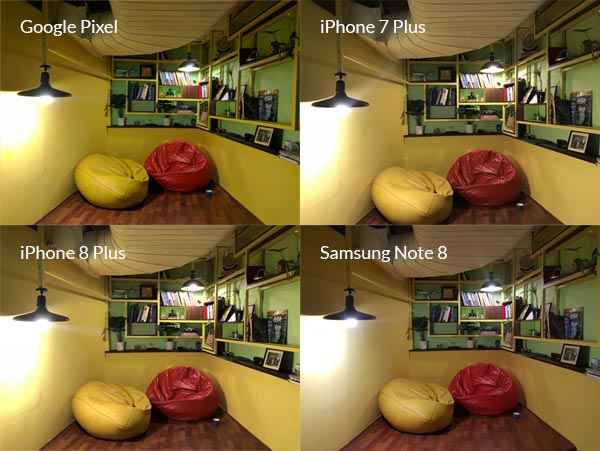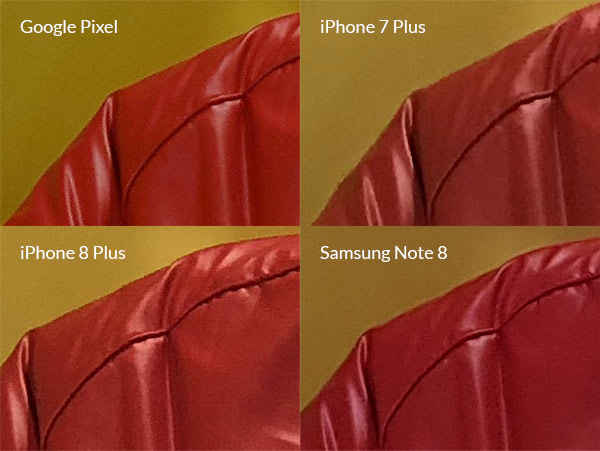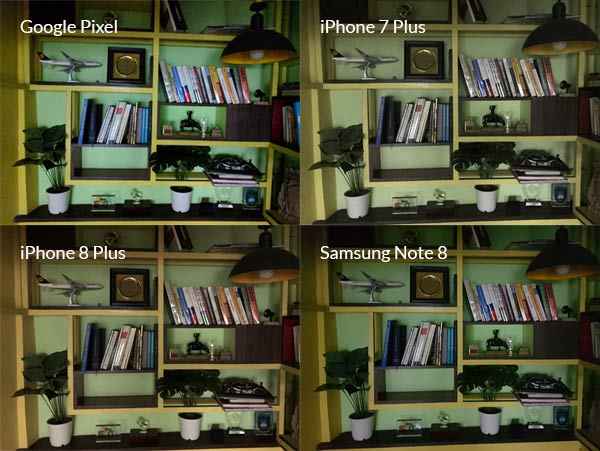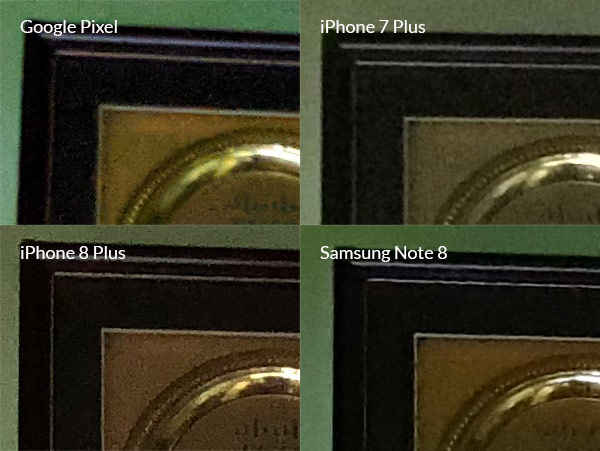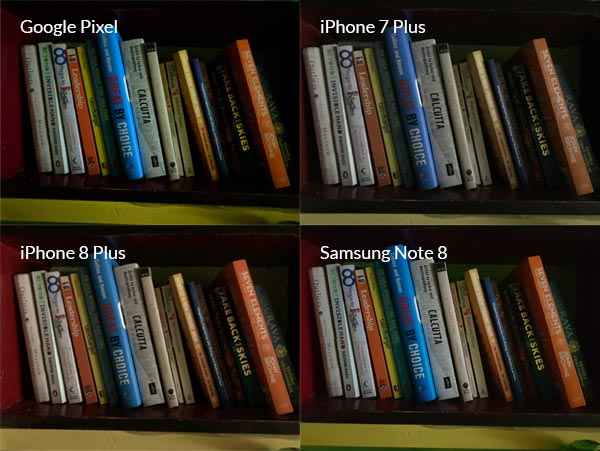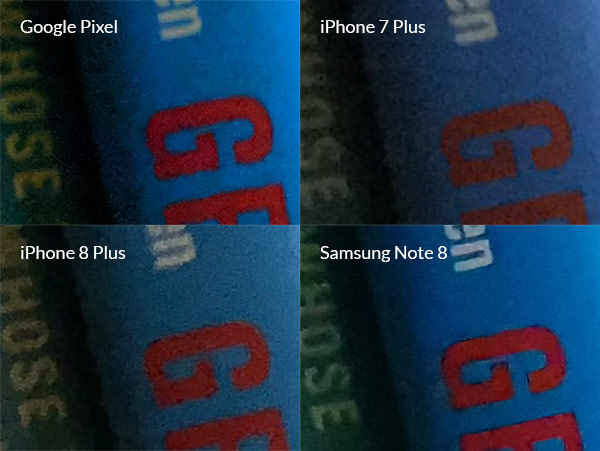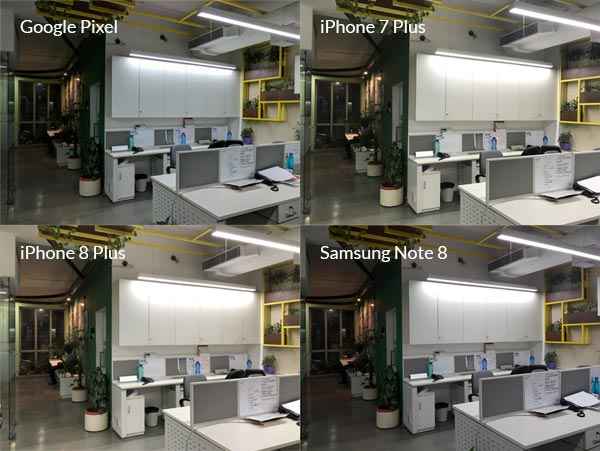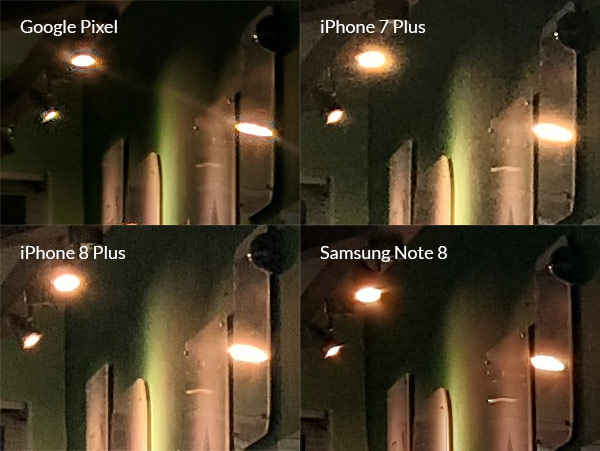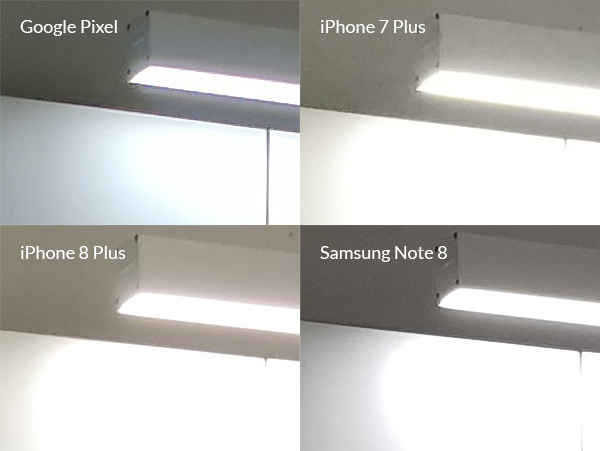Apple iPhone 8 Plus Review : Has the substance but lacks the style
The Apple iPhone 8 Plus is a dependable workhorse and the default choice if you are looking for a pure performance flagship smartphone. However, it simply doesn't have the design and looks to match its performance credentials.
So, how good is the iPhone 8 Plus, and does it give you enough reasons to bring it into your consideration set? Let's find out.
Build and design: Premium materials and finish on an aging design
The iPhone 8 and 8 Plus design is the last of its kind (hopefully) and its clearly showing its age. Sure, the body is all glass (with a metal frame), giving away the all metal uni-body jacket it wore for the past 3 versions. And, it does feel premium in comparison to the previous iPhones, thanks to the excellent fit and finish. In fact, in the fit and finish department, the iPhone 8 Plus (and the iPhone 8) sit right at the top of the flagship segment. Apple claims to have used the most durable glass ever on a smartphone for the iPhone 8 series. While that might protect the glass from easily getting scratched, at the end of the day, it still needs extra care and protection. Glass as a material is a lot more susceptible to breakage in comparison to the all-metal body in the previous generations. We wouldn’t really bet on the glass back if it were to meet the Indian tarmac. The IP67 rating makes the new iPhones water and dust resistant. Which means it can handle that accidental exposure to water and dust. However, the warranty does not cover any sort of liquid damage and hence you can't really dunk the phone in a jar of water or go swimming with it. It's splash resistant and not water proof.
Overall, on the looks, design and build front, the iPhone 8 Plus comes across as a well-built phone, feels super premium in terms of fit and finish, but it struggles to excite or wow you. For a smartphone with a 5.5-inch display; its weight, dimensions and design are clearly a generation old and they don't match-up to the current crop of flagships.
The display: A joy to use
With a 5.5-inch 1080p display, the iPhone 8 Plus surely won't win any points on pixel density. However, where it surely comes out on top is the accuracy, white balance and usability front. The 5.5-inch IPS display is adequately sharp and offers accurate colors. The True Tone display, which was first seen on the 9.7-inch iPad Pro, makes its way into the iPhone 8 series as well. True Tone technology on the iPhone 8 Plus dynamically adjusts the color temperature to match the ambient light condition, a bid to produce accurate colors irrespective of light conditions. Overall, the True Tone feature does make a difference and is particularly handy in brightly lit (outdoor) environments. However, activating True Tone feature slightly shifts the overall color tone towards the warmer side. Apart from accurate colors, the Apple iPhone 8 Plus aces outdoor visibility, the display appears bright and manages to retain contrast levels even when used in bright day light environments. Apple iPhones have consistently impressed us with outdoor display visibility and the iPhone 8 Plus maintains its supremacy in this department.
The Apple iPhone 8 Plus next to the Samsung Galaxy S8 Plus under bright day light. The iPhone 8 Plus clearly offers better screen viewability, with lower reflection and better color accuracy. But the Samsung Galaxy S8 clearly has the upperhand when it comes to looks and style.
The iPhone 8 Plus (at left) with True Tone display mode actiavted, next to the iPhone 7 plus. True Tone display prefers a slightly warmer tone.
Speakers: Loud and clear sound
Apple has complimented the improved display on the iPhone 8 Plus with an evidently upgraded audio experience from its stereo speaker setup. The speakers on the iPhone 8 Plus are louder and also offer cleaner sound in comparison to the iPhone 7 Plus. Cranking the volume to maximum levels doesn't distort the sound, which is a big plus.
Performance: Simply the fastest smartphone around, and it shows across the board
Let alone synthetic benchmarks (where is easily beats every other flagship smartphones), even when it comes to heavy multitasking environments with extended periods of usage, the iPhone 8 Plus shows no sign of any lag or slowing down. The fast hardware goes brilliantly well with the optimised OS, we never faced any issues in terms of app freezing or crashes. Not even one. In that sense, the iPhone 8 Plus is supremely dependable, it just works, and you can count on it.
The hexa core A11 Bionic chip at the heart of the iPhone 8 Plus runs at 2.17 GHz (at peak) and has a massive 8MB of L2 cache, a substantial change (improvement) in comparison to the A10 and A9 SoCs used in previous generation iPhones, which came with 3MB L2 cache + 4MB L3 cache configuration. The larger L2 cache on the A11 Bionic chip along with the efficient 10nm manufacturing process, allows Apple to scale up compute performance without the need to boost the clock speeds. As a result, the A11 Bionic chip manages to stay power efficient while offering better performance than its predecessors. Add the fact that all six cores (2 performance and 4 efficiency) on the A11 can run simultaneously and you have a very versatile chip. During our entire review period, the iPhone 8 Plus never reached alarming or uncomfortable temperatures. Which is also a plus for such a high-performance smartphone.
Read our feature to know more about the A11 Bionic chip that powers the Apple iPhone 8 and iPhone X.
Camera: Improvements in every aspect, but not the best
We've done a detailed comparison of the iPhone 8 Plus and the iPhone 8 camera with the iPhone 7 series. The iPhone 8 Plus has evidently improved in the image quality department over the previous generation. In day light, the iPhone 8 Plus produced excellent image quality with accurate colors and well-preserved details. The phone locks focus instantly and offers blazing fast capture speeds. We also noticed improvements in detail levels, colors and sharpness when using the telephoto lens. Images shot with 2x optically enabled zoom produced good results in adequate light conditions.
Shot taken using the 2x optical zoom
In low-light scenarios, the iPhone 8 Plus stays true to source, and doesn't overly brighten the image
The portrait lighting mode (in beta state) is a new feature that uses depth mapping to bring studio lighting effects to portraits. The feature is a nice touch and offers opportunities to experiment with portrait photography. You can even alter the lighting after the portrait is clicked. The fact that the feature is in "beta" mode does show, we weren't able to consistently get accurate separation when using the lighting effects.
In this portrait shot, the iPhone 8 Plus does well to seperate the immediate background as well as the distant background
When it comes to low-light shooting, the iPhone 8 Plus doesn't show the same level of improvements and it does fall behind the competition. As you can see from our comparison below, the Google Pixel still remains the low-light champion followed by the Samsung Galaxy Note 8. Having said that, the iPhone 8 Plus is still an excellent low-light shooter that will stand up to the challenge and deliver the goods for most users. It's only when you pixel peep or look closer for a detailed comparison that you notice the finer differences that keeps it away from being the top dog in the low-light arena.
When it comes to low-light performance comparison, the Apple iPhone 8 Plus scores below the Google Pixel and Samsung Galaxy Note 8.
Software and AR
Running on iOS 11, the iPhone 8 Plus offered a glitch free experience throughout the review period. Apple's iOS has matured in terms of dependability and ease of use, but it also is begging for a cosmetic change. With iOS 11, most changes were made at the core, with a few tweaks and a new control center that essentially offers more shortcuts and improved customisation being the visible changes. Apple also introduced its ARKit with iOS 11, its first big step in the AR field. The performance chops in the iPhone 8 Plus come in handy to check-out the first wave of AR apps that make use of the A11 Bionic chip in delivering a seamless AR experience. Older iOS devices also support the same AR experiences, but the iPhone 8 Plus just felt a whole lot smoother and comfortable with the same bunch of AR apps. It will be interesting to see how Apple ramps-up the AR capabilities on iOS and takes full advantage of the A11 bionic chip to deliver its very own vision of AR on smartphones.
WarHammer Free Blade (game on App Store) has an AR mode that gives you a taste of AR capabities of the iPhone 8 Plus
With a slightly smaller capacity battery slice in comparison to the iPhone 7 Plus, a faster SoC and perhaps even a more power-hungry screen, the odds were against the iPhone 8 Plus to improve upon or deliver stellar battery life. However, we were pleasantly surprised at how the iPhone 8 Plus easily went past a busy day with the battery meter showing 15% of life before we put it to charge. Our 18-hour busy day comprised of a couple of movie downloads (Amazon Prime) over WiFi, play back of movies in flight mode (4 hours of screen on time) with Bluetooth on and screen at 75% brightness, 25 mins of gaming, 45 mins of voice calls over 4G, 2.5 hours of browsing and about 15 minutes of camera usage with a few pics and a 5-minute-long video. At the end the 18-hour period, the battery indicator was down to 15% before we put it to charge and called it a day. As far as flagship phones are concerned, the iPhone 8 Plus is right at the top when it comes to battery life. The combination of glitch free user experience, blazing fast response time and good battery life makes the iPhone 8 Plus a dependable smartphone.
Consider the iPhone 8 Plus if you are an iPhone user and are on the iPhone 6/6s device. The iPhone 8 Plus will offer significant upgrades in all departments while making you feel at home. IPhone 7/7 Plus users won’t find the iPhone 8 Plus to be a significant upgrade and should probably wait for the iPhone X if they are looking for an upgrade. If you are not an iPhone user, and have been evaluating the iPhone 8 Plus against the Android flagship lineup (namely the Samsung Galaxy S8 series, the Samsung Galaxy Note 8 and the upcoming Google Pixel 2), the iPhone 8 Plus has the substance to compete with these phones (and even beat them in some areas), but it lacks the style and oomph that you’d expect from a flagship that costs upwards of 70K.
Soham Raninga
Soham Raninga is the Chief Editor for Digit.in. A proponent of performance > features. Soham's tryst with tech started way back in Dec 1997, when he almost destroyed his computer, trying to make the Quake II demo run at >30FPS View Full Profile

